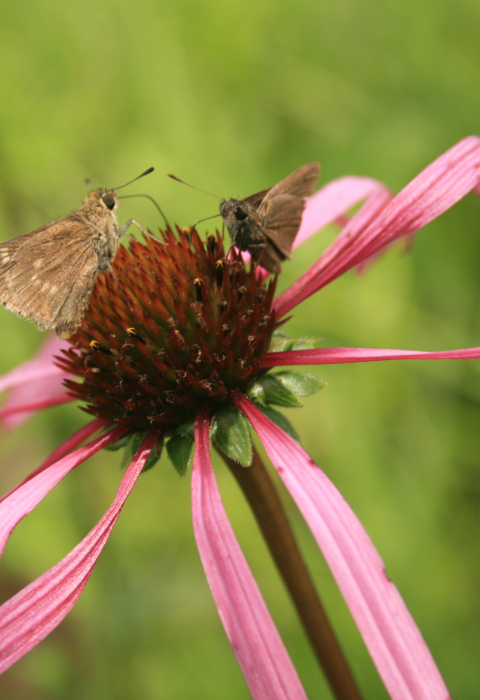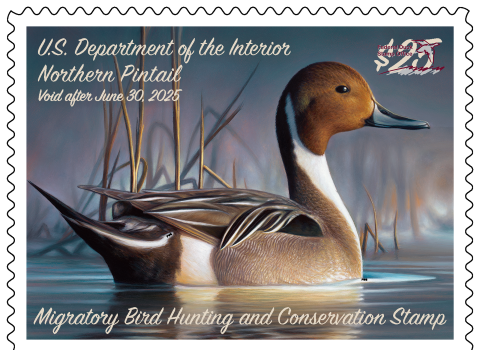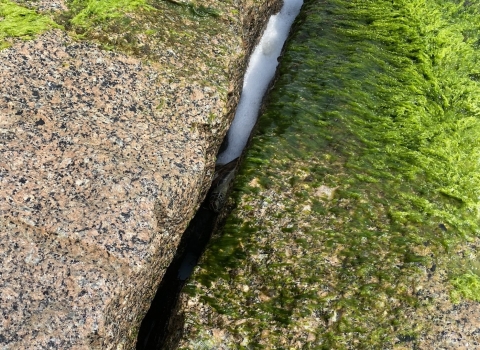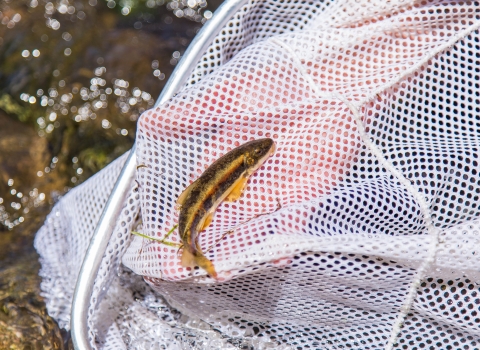Following a thorough scientific review, the U.S. Fish and Wildlife Service (Service) is proposing to downlist the smooth coneflower from endangered to threatened under the Endangered Species Act (ESA). A 4(d) rule that tailors protections while allowing activities that do not hinder its recovery is also being proposed. The proposal represents a significant recovery milestone for the plant following years of ESA-inspired partnerships across its range in Georgia, North Carolina, South Carolina and Virginia.
The ESA defines endangered as a species that is currently in danger of extinction throughout all or a significant portion of its range and threatened as likely to become endangered in the foreseeable future. The proposed downlisting is another example of the power of conservation partnerships between federal, state and private stakeholders under the ESA.
“Having healthier and more abundant populations of smooth coneflower out in the wild is proof that by working collaboratively, we can rescue species from the brink and recover them,” said Leo Miranda, the Service’s Regional Director. “Our partners have done an amazing job at reducing threats to this plant which is helping pave the way to its recovery.”
When the Service listed the smooth coneflower as an endangered species in 1992, 39 populations had disappeared, and the 21 remaining populations were vulnerable and unstable. Since then, more populations have been discovered and conservation projects have been implemented with documented success. The Service has also funded research projects that have led to increased knowledge about the coneflower’s genetics, pollination ecology, and creation of seed banks.
Today, 44 distinct populations of smooth coneflower exist in Virginia (15), North Carolina (6), South Carolina (12) and Georgia (11). Sixteen of these 44 populations are considered healthy and occur within protected national forests and nature preserves where threats from habitat modification have been reduced.
When the coneflower was listed, the primary threats to it were fire suppression, development, invasive species invasive species
An invasive species is any plant or animal that has spread or been introduced into a new area where they are, or could, cause harm to the environment, economy, or human, animal, or plant health. Their unwelcome presence can destroy ecosystems and cost millions of dollars.
Learn more about invasive species and highway right-of-way maintenance activities such as pesticide application and mowing. Some threats still remain, including habitat loss, degradation, fragmentation and the effects of climate change climate change
Climate change includes both global warming driven by human-induced emissions of greenhouse gases and the resulting large-scale shifts in weather patterns. Though there have been previous periods of climatic change, since the mid-20th century humans have had an unprecedented impact on Earth's climate system and caused change on a global scale.
Learn more about climate change , such as drought, which can be especially detrimental during the growing season.
The U.S. Forest Service manages smooth coneflower habitat within Chattahoochee National Forest, Sumter National Forest, George Washington and Jefferson National Forests, as well as at the Savannah River Site. Since its listing, the U.S. Forest Service has designated Special Management Areas for each of their populations, thereby limiting access to the plants. They use prescribed fire to maintain suitable habitat, helping ensure smooth coneflower populations thrive.
“Being consistent with periodic prescribed fires on a three-year rotation has been critical to the restoration of habitat for this species,” said Mike Brod, fire and natural resources staff officer at Chattahoochee-Oconee National Forest. “Often times, prescribed fire coupled with the manual cutting of competing vegetation is needed for this species to thrive. We have been implementing these treatments on the forest for well over a decade and are continuing to see these populations expand. Our success on the forest could not be possible without the support of many partners associated with the Georgia Plant Conservation Alliance.” In addition to the U.S. Forest Service, other organizations collaborating on smooth coneflower conservation include the North Carolina Botanical Garden, North Carolina Plant Conservation Program, the State Botanical Garden of Georgia, the Atlanta Botanical Garden, the Georgia Plant Conservation Alliance, U.S. Army Corps of Engineers, county governments, and numerous other partners. These groups monitor coneflower populations on a regular basis and also plant smooth coneflower to augment existing populations. Prescribed fire is used to reduce competition from woody species, eradicate invasive species, and promote smooth coneflower germination and growth.
In addition to the U.S. Forest Service, other organizations collaborating on smooth coneflower conservation include the North Carolina Botanical Garden, North Carolina Plant Conservation Program, the State Botanical Garden of Georgia, the Atlanta Botanical Garden, the Georgia Plant Conservation Alliance, U.S. Army Corps of Engineers, county governments, and numerous other partners. These groups monitor coneflower populations on a regular basis and also plant smooth coneflower to augment existing populations. Prescribed fire is used to reduce competition from woody species, eradicate invasive species, and promote smooth coneflower germination and growth.
The proposed 4(d) rule for the plant will allow certain management actions that would otherwise be prohibited as long as they are conducted in the manner consistent with the recovery of the species. Prohibitions in the proposed 4(d) rule include importing or exporting; certain acts related to removing, damaging, and destroying; delivering, receiving, transporting, or shipping in interstate or foreign commerce in the course of commercial activity; or selling or offering for sale in interstate or foreign commerce. Exceptions include seeds of cultivated specimens and conservation efforts by any agent of the Service or State Conservation Agency operating in a conservation program pursuant to the terms of a cooperative agreement with the Service in accordance with section 6 of the ESA.
The public will have a 60-day period to comment on this proposal, which will end on August 23, 2021. To comment, go to the Federal eRulemaking Portal. Search for Docket Number FWS–R4–ES–2020–0063, which is the docket number for this action.



